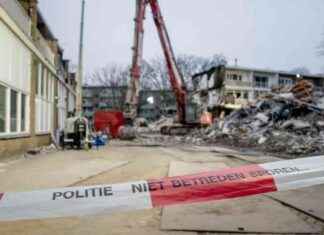the Alliance lost the election. The alliance cracked. The bourgeoisie is in ruins.
It has been repeated so many times now, not the least of the bourgeois themselves, people will soon believe that it is true.
“the alliance”, with its ritual coffee and forced photo opportunities, is obviously death. Which is sad for those closest to the grieving partiledningarna. The policy itself live on, more alert than in a very long time indeed.
It has often been called to allianssamarbetet is absolutely central to the bourgeoisie to be able to reach power in Sweden. There was a part in it for 15 years ago, but ever since the elections of 2014 and up to now, there have in practice worked on the contrary.
as long As the ruling coalition parties had agreed wanted to stay together at any price became the only solution is to not do anything, because it was not agreed how it would be done – together with S, or with the support of SD.
with rödgrön economic policy, and the strong influence of the Left party. This time, with nearly identical results, the burst instead of the alliance. And just look what happened:
By taking the fixed distance from SD, and at the same time use the opportunity to the SD influence utpressningskort have Annie Lööf received social democrats to back away from basically the whole of their election campaign, and also stared down the Left to the somewhat degrading submission. It is an impressive, and fascinating, political achievement.
the Result is that a rödgrön government is now not only to running major parts of The policy, but bearing the brunt of the policy in question is not working as intended. Congratulations.
against the liberal government policy will be now liberal Ulf Kristersson. The realistic alternative to the current government is already established: A M/KD-government, which, to some extent, adapt their proposal to win the SD’s approval.
M, the KD and SD reached 44 per cent in the autumn elections, and 51 percent is, of course, no impossibility in the four-year term. Would the Liberals (the party), change the foot, for example, according to Jan björklund’s departure, it may require even less than that.
Read more: the Winners and the losers in the januariavtalet
If there was an election today, would the Swedish voters, thus, in practice, be faced with two options: A liberal reform agenda with Stefan Löfven, or a civil reform agenda with Ulf Kristersson.
for those who like allianspolitik. If it were not for the fact that it has taken so long and been managed so taffligt one could wonder whether the “alliance division” was in fact a cunning plan.
Alliance-agendornas stranglehold on the Swedish power apparatus becomes even more impressive if you look at how it goes against the international trends.
Then, I do not intend in the first place on the single trend we normally talk about, thus Donald Trumps Hungarian-brazilian populisttrupper, but to the fact that traditionally bourgeois institutions such as the IMF and the sole liberal magazines anything more starts to sound like… old Swedish sossar.
should be treated with more equality, it is said, not greater wage dispersion. Higher taxes for the very highly compensated, not the other way around. Safer job, not “more mobility on the labour market”.
Whether it is right or wrong is of course a subjective assessment, but it can be seen that the type of reasoning you hear more and more often. Abroad, that is.
“In Sweden, we choose another way”, said Stefan Löfven, in his government declaration.
It was correct, in more ways than he really meant.
Read more: Here is the policy that Löfven should implement








